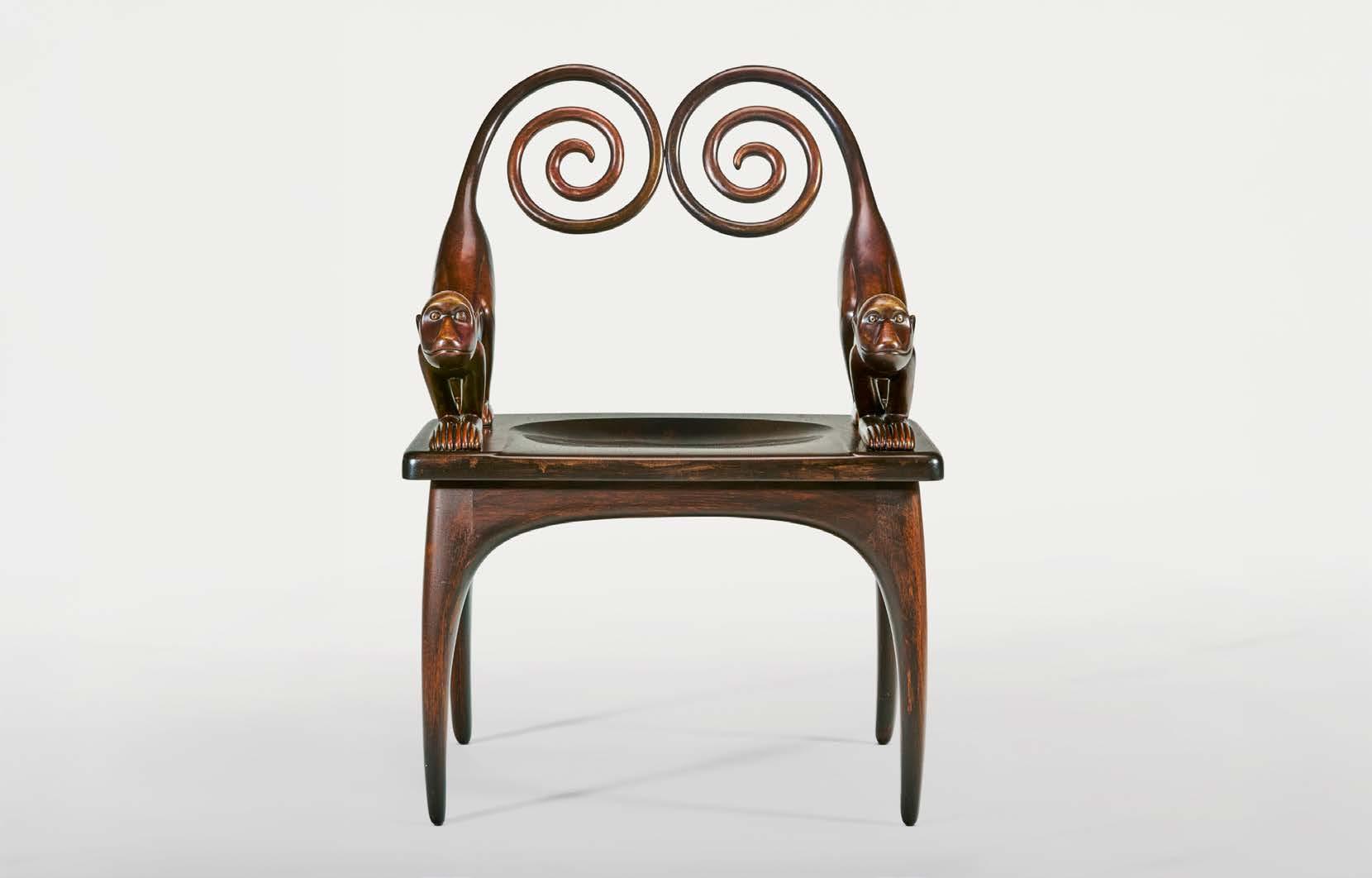
JUDY KENSLEY MCKIE FOUR MASTERWORKS


JUDY KENSLEY MCKIE FOUR MASTERWORKS
Judy Kensley McKie’s work resists easy categorization, existing at the intersection of sculpture and furniture, art and utility, play and power. A seminal figure in the American studio furniture movement, she is renowned for transforming functional objects into expressive, symbolic forms animated by stylized animals— creatures that feel both ancient and alive. Her tables, chairs, and consoles become vessels of personality, reverence, and mythic resonance.
This offering presents a rare group of four masterworks now available: the Panther Low Table, the Lynx Console Table, the Monkey Chair, and the Swan Sconce. Together, they demonstrate McKie’s extraordinary ability to balance strength with grace, simplicity with symbolism, and whimsy with solemnity.
Across all four works, McKie’s distilled forms and stylized animals speak to something primal and enduring. “It’s very difficult to be simple,” she once remarked—a statement that underlines the rigor and introspection behind her practice. Through drawing, carving, and quiet observation, she reaches what she describes as “the bottom of the pond,” a place of clarity and deep feeling.
From that reflective space emerge objects that do more than serve a purpose—they invite us to pause, to engage, and to enter the timeless, mysterious world McKie so uniquely inhabits.
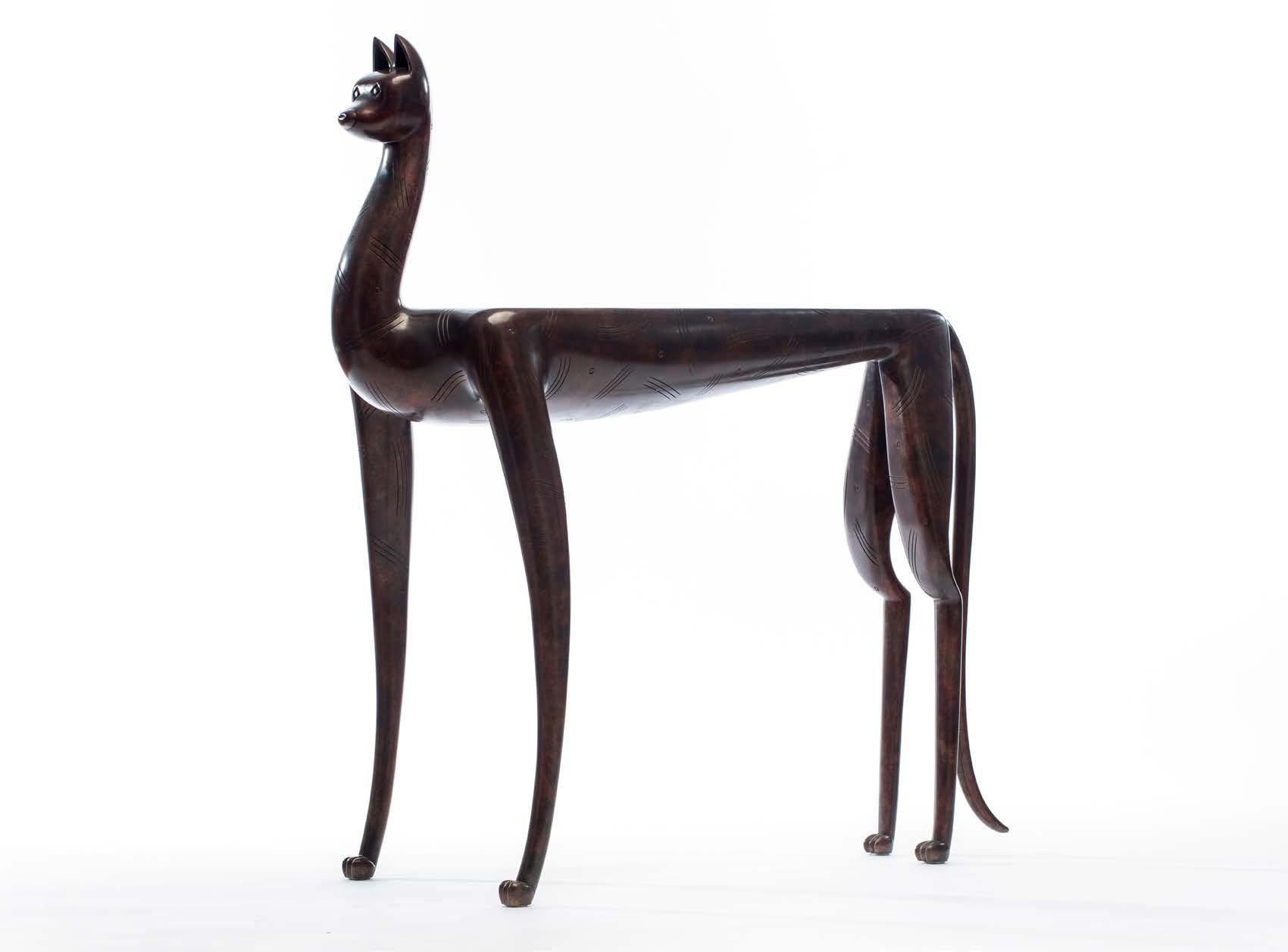
The Panther Low Table is a study in tension and elegance. Two sleek, muscular panthers stretch in opposite directions beneath a glass surface, their carved bodies taut with motion yet utterly still. Their forms evoke speed, stealth, and self-possession—qualities that feel less decorative than symbolic, like guardians of the space they occupy. The table is at once a celebration of animal beauty and a meditation on balance— between motion and rest, function and form.
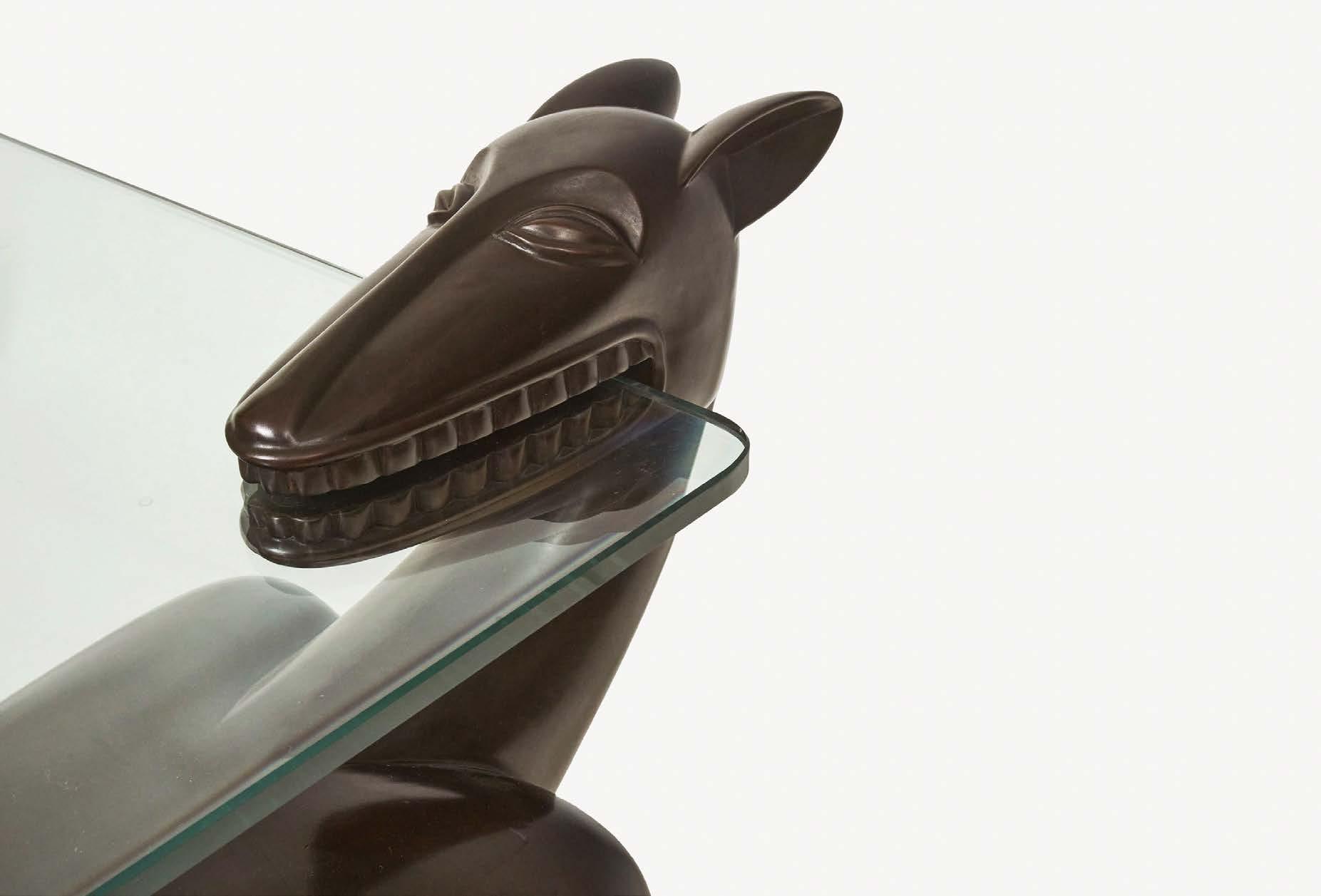
Panther Table, 1989 | Bronze, Glass | 16 × 50 1/2 × 40 in
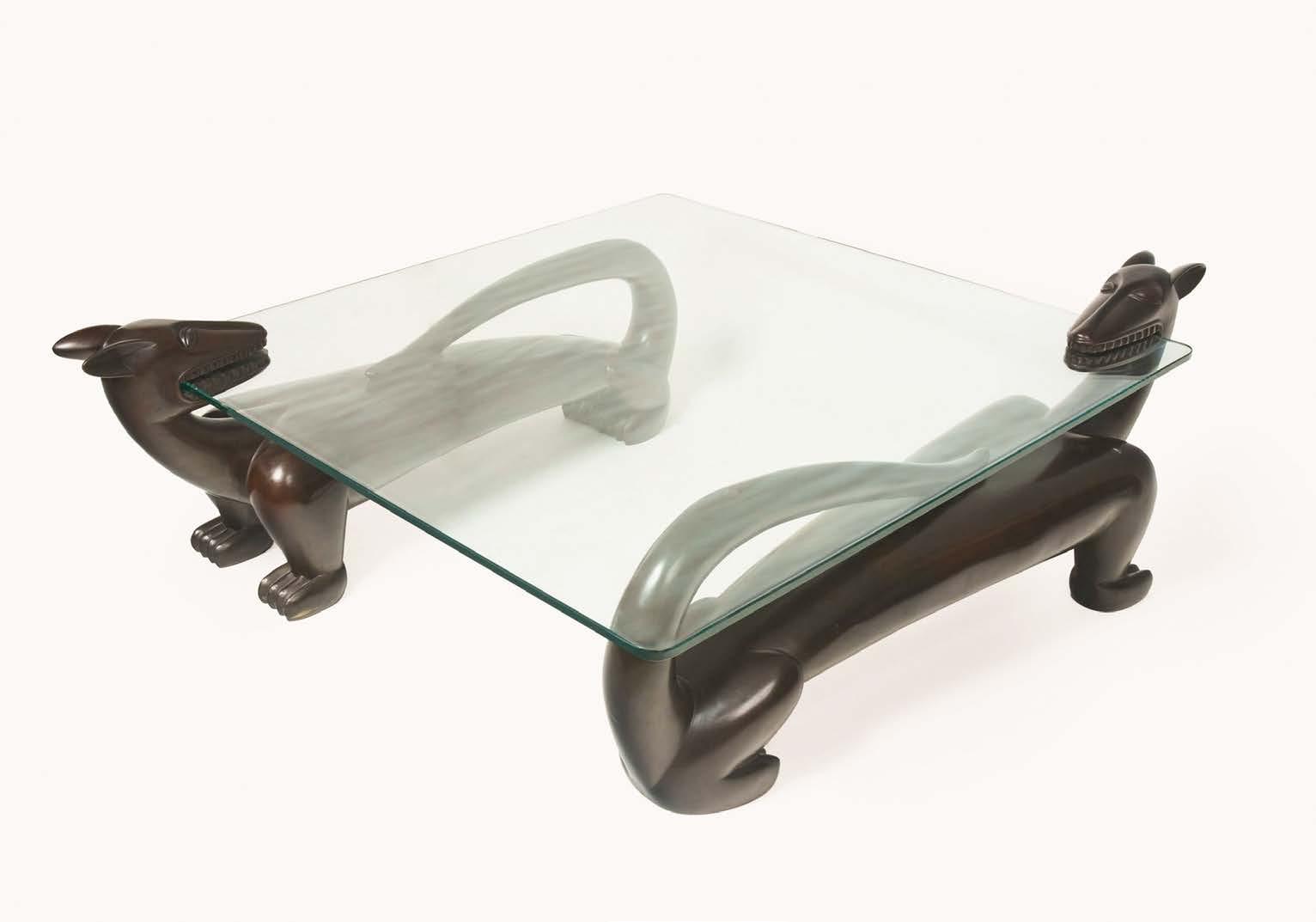
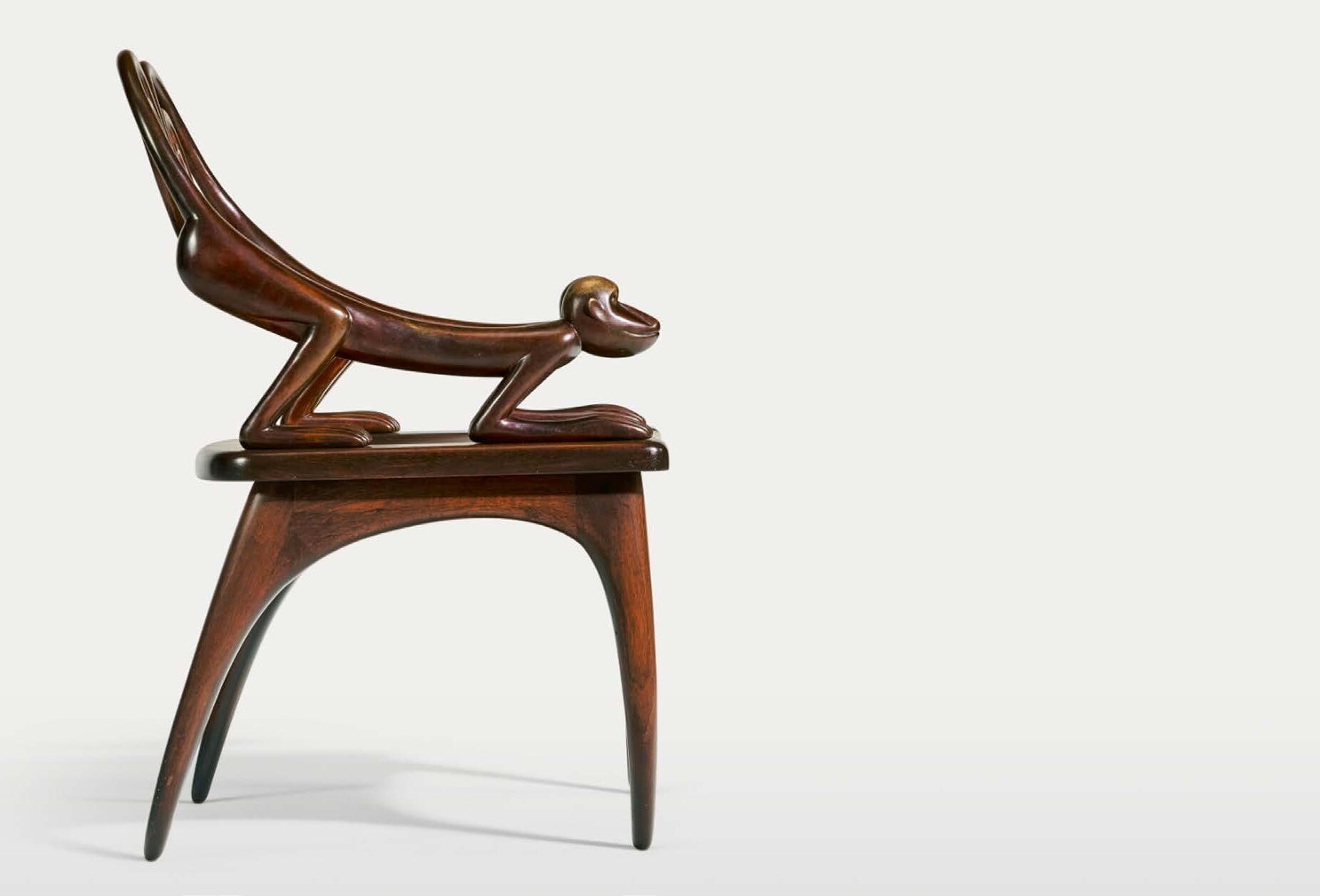
The Monkey Chair, the most enigmatic of the grou, is a bold union of bronze and carved walnut, the chair wraps two monkeys around the sitter, their curled tails forming the backrest. There is ambiguity in their expression—are they protectors or tricksters?—but there is no mistaking the sense of presence. When seated, one feels held, even empowered. First shown at Pritam & Eames in 1994, this was McKie’s first exploration combining metal and wood in a single piece—a pairing she wouldn’t return to for another ten years.
